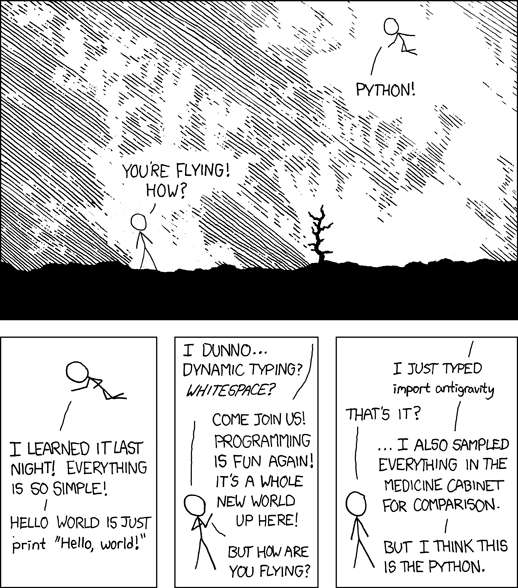What does "SyntaxError: Missing parentheses in call to 'print'" mean in Python?
Hire the world's top talent on demand or became one of them at Toptal: https://topt.al/25cXVn
and get $2,000 discount on your first invoice
--------------------------------------------------
Music by Eric Matyas
https://www.soundimage.org
Track title: Quirky Dreamscape Looping
--
Chapters
00:00 What Does &Quot;Syntaxerror: Missing Parentheses In Call To 'Print'&Quot; Mean In Python?
00:19 Accepted Answer Score 687
02:38 Answer 2 Score 26
02:58 Answer 3 Score 39
03:18 Answer 4 Score 8
03:39 Thank you
--
Full question
https://stackoverflow.com/questions/2544...
--
Content licensed under CC BY-SA
https://meta.stackexchange.com/help/lice...
--
Tags
#python #python3x
#avk47
ACCEPTED ANSWER
Score 687
The error message SyntaxError: Missing parentheses in call to 'print' occurs when you attempt to use Python 3 syntax with the Python 2 print statement.
Example:
print "Hello, World!"
In Python 3, the print statement was replaced with a print() function, requiring parentheses around the value to be printed.
Solution
print("Hello, World!")
In Python 3, the print statement was replaced with a print() function, requiring parentheses around the value to be printed.
>>> print("Hello, World!")
Hello, World!
In earlier versions of Python 3, the interpreter just reports a generic syntax error, without providing any useful hints as to what might be going wrong:
>>> print "Hello, World!"
File "<stdin>", line 1
print "Hello, World!"
^
SyntaxError: invalid syntax
As for why print became an ordinary function in Python 3, that didn't relate to the basic form of the statement, but rather to how you did more complicated things like printing multiple items to stderr with a trailing space rather than ending the line.
In Python 2:
>>> import sys
>>> print >> sys.stderr, 1, 2, 3,; print >> sys.stderr, 4, 5, 6
1 2 3 4 5 6
In Python 3:
>>> import sys
>>> print(1, 2, 3, file=sys.stderr, end=" "); print(4, 5, 6, file=sys.stderr)
1 2 3 4 5 6
Starting with the Python 3.6.3 release in September 2017, some error messages related to the Python 2.x print syntax have been updated to recommend their Python 3.x counterparts:
>>> print "Hello!"
File "<stdin>", line 1
print "Hello!"
^
SyntaxError: Missing parentheses in call to 'print'. Did you mean print("Hello!")?
Since the "Missing parentheses in call to print" case is a compile time syntax error and hence has access to the raw source code, it's able to include the full text on the rest of the line in the suggested replacement. However, it doesn't currently try to work out the appropriate quotes to place around that expression (that's not impossible, just sufficiently complicated that it hasn't been done).
The TypeError raised for the right shift operator has also been customised:
>>> print >> sys.stderr
Traceback (most recent call last):
File "<stdin>", line 1, in <module>
TypeError: unsupported operand type(s) for >>: 'builtin_function_or_method' and '_io.TextIOWrapper'. Did you mean "print(<message>, file=<output_stream>)"?
Since this error is raised when the code runs, rather than when it is compiled, it doesn't have access to the raw source code, and hence uses meta-variables (<message> and <output_stream>) in the suggested replacement expression instead of whatever the user actually typed. Unlike the syntax error case, it's straightforward to place quotes around the Python expression in the custom right shift error message.
ANSWER 2
Score 39
Unfortunately, the old xkcd comic isn't completely up to date anymore.
Since Python 3.0 you have to write:
print("Hello, World!")
And someone has still to write that antigravity library :(
ANSWER 3
Score 26
There is a change in syntax from Python 2 to Python 3. In Python 2,
print "Hello, World!"
will work but in Python 3, use parentheses as
print("Hello, World!")
This is equivalent syntax to Scala and near to Java.
ANSWER 4
Score 8
If your code should work in both Python 2 and 3, you can achieve this by loading this at the beginning of your program:
from __future__ import print_function # If code has to work in Python 2 and 3!
Then you can print in the Python 3 way:
print("python")
If you want to print something without creating a new line - you can do this:
for number in range(0, 10):
print(number, end=', ')
